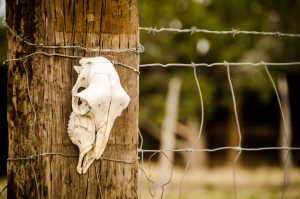Applications are now closed. Click here to view the FY 2025 Invasive Species Mitigation Program Application.
The Utah Department of Agriculture and Food (UDAF) is now accepting Invasive Species Mitigation Weed Control Grant Applications for the 2024-25 seasons. The goal of this program is to allocate funds to projects which have management strategies with a high degree of potential success in the State of Utah.
General Information:
For FY 2024-25, UDAF is looking for projects that target high priority species and will reduce the number outlier populations. It is highly recommended that multi-year proposals include a 3-5 year management plan, an extensive monitoring component, solid participating partners, and a strong restoration component.
Eligible Organizations:
Universities; Cooperative Weed Management Areas (CWMA’s); County Weed Boards; Federal or State Agencies; Federal, State, Tribal or Private Landowners; Conservation Districts, nonprofits, and/or other Political Subdivisions.
Limit of Requests:
For FY 2024-25, projects will be funded for the current year only, with the possibility of renewing funding for a multi-year project, based on available funds. Funding for projects will begin July 1, 2024 and terminate June 30, 2025.
Eligible Activities:
- Early detection & rapid response
- Treating critical acres that protect larger land use areas
- Monitoring and preventing the spread of small populations and new introductions
- Monitoring and rehabilitating established infestations
- Research related to invasive species
Ranking / Incomplete Applications:
Only complete applications will be moved to the ranking committee for project ranking. As part of UDAF’s dedication to excellence, each grant application will be reviewed for completeness. Any applications which are incomplete will not be considered for ranking and funding. All applications will require a Utah Spatial Invasive Infestation Project Analysis (SIIPA) included. If you are not familiar with the Utah SIIPA, you will need to contact Aaron Eagar at aeagar@utah.gov.
Specific Ranking Criteria:
- Early Detection Rapid Response / Project Management
- Rehabilitation / Treatment
- Wildfire Threat / Risk
- Economic Benefit
- Wildlife Impact
Required Grant Proposal Attachments:
- Application will include a Utah SIIPA Geodatabase file of your project area. (Generated by SIIPA tool)
- Application will include a Utah SIIPA Project Report. (Generated by SIIPA tool)
- Applications including any ground disturbance will be required to submit a supplemental .pdf and shape file of the area to be disturbed for archeological clearance. No ground disturbance will proceed without written approval from UDAF as defined in U.C.A. 9-8-404(1)(a).
- If a County is listed as the fiscal agent, the County must have an active Weed Board and be up to date on the required year end reports to UDAF.
- If a Federal Agency is listed as the fiscal agent then they are required to match grant dollars at least 1:1 (match must be monetary and not in-kind)

Prohibited Activities:
The Noxious Weed Grants are intended to control or manage noxious weeds with “on the ground work”. Invasive Species Mitigation (ISM) Grants will not be awarded for mapping without active on the ground treatment. A minimal amount of Noxious Weed Grant funding (less than $5,000) can be used for the purchase of incidental equipment needed to complete a project.
The purchase of large pieces of equipment, such as four-wheelers and large spray tanks are not allowed unless prior permission has been given. Funds listed in the (Other) category within the budget will require an attached budget sheet defining how funds will be allocated.
.
Administrative Overhead Costs:
The Grantee may include up to a maximum of 10% of the project costs to provide for planning and administration of the grant.
In this administrative cost, the following items should be listed and included:
- Project Reports (required)
- Mapping and Complete GIS Information for the project (required)
- Project Monitoring Costs (required)
Invasive Species Mitigation Program Projected Timeline:
- February 1 – March 15, 2024 — Open Application for submissions
- March 15 – April 12, 2024 — Applications will be ranked by ranking committee
- April 14 – April 26, 2024 — Notification and contracting of awarded projects
- May 1 – May 31, 2024 — Contracting
- July 1, 2024 – June 30, 2025 — Project work completed
Additional Resources:
Grant Application:
(For more information contact Aaron Eagar: aeagar@utah.gov, 801-602-1961)
Learn more from the AmpliFund Applicant Training Video Series:
- New User Registration
- Portal Navigation
- Opportunity Overview
- How to complete an Application
- How to complete a budget template
- How to complete a performance plan template
- Administration Section
- Application Status – View, Withdraw, Delete
- Returning to the Applicant Portal
…





